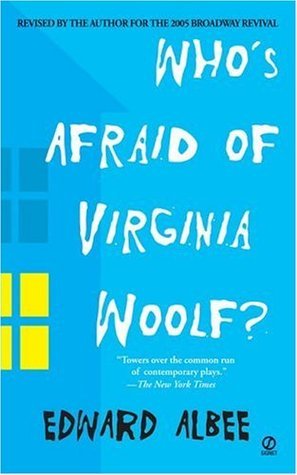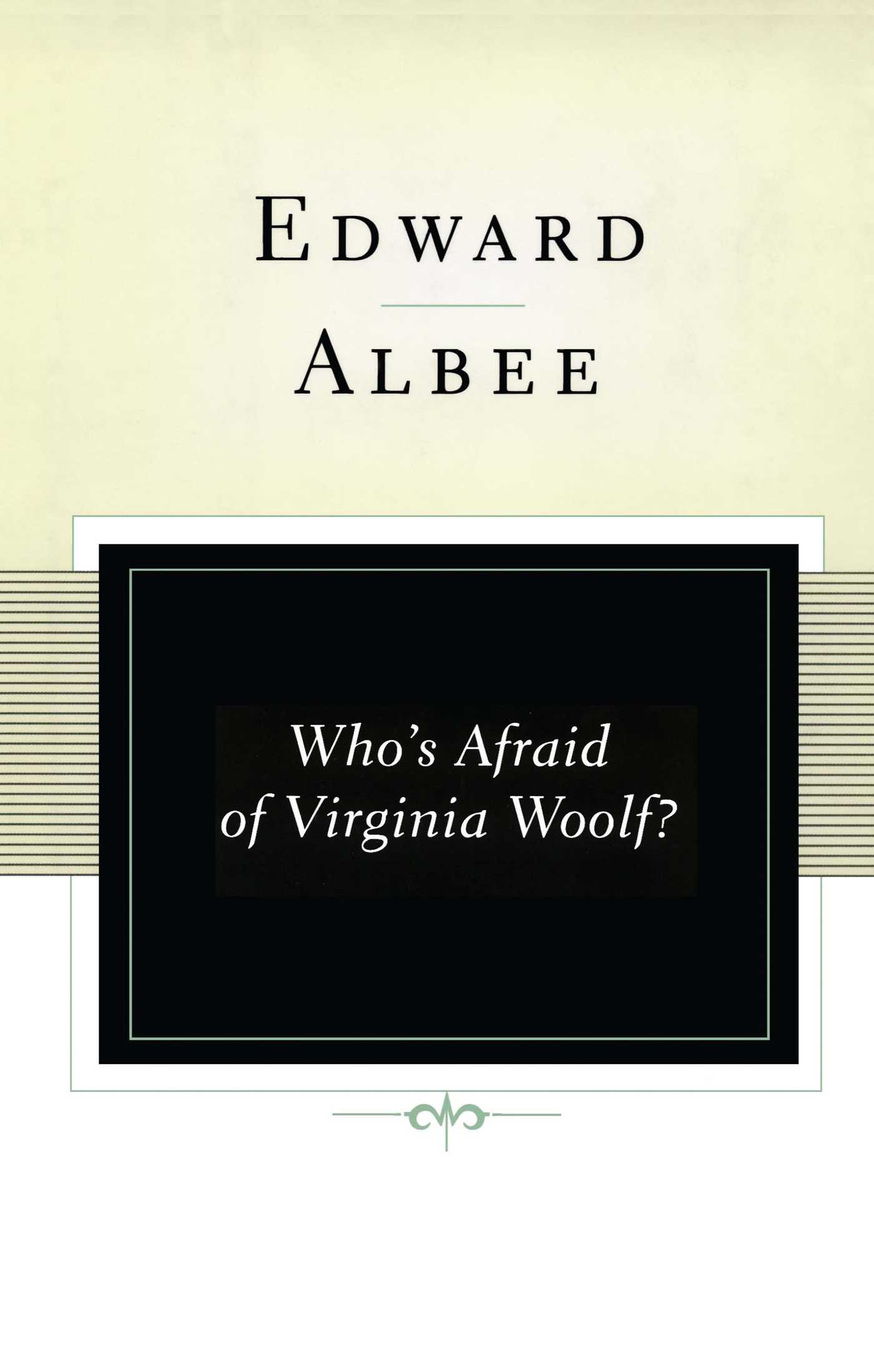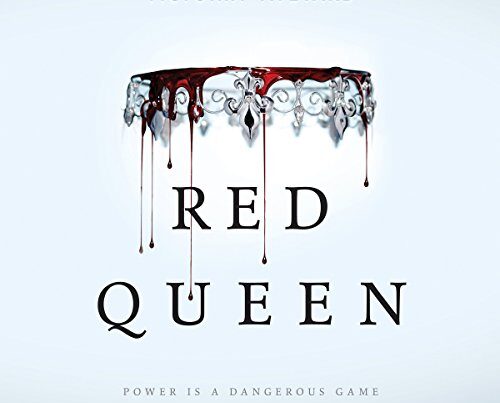Edward Albee’s “Who’s Afraid of Virginia Woolf?” Audiobook presents a gripping exploration of marital strife and psychological manipulation.
This iconic play delves deep into the complexities of human relationships. Edward Albee’s “Who’s Afraid of Virginia Woolf? ” Stands as a seminal work in American theater. The story revolves around George and Martha, a middle-aged couple, who invite a younger couple over for drinks.
As the evening progresses, the layers of their tumultuous relationship unravel. The play exposes the raw emotions and hidden truths that lie beneath the surface. This audiobook brings Albee’s sharp dialogue and intense character interactions to life. Listeners are drawn into a night of confrontations and revelations that challenge the boundaries of reality and illusion. This compelling drama remains relevant and engaging for contemporary audiences.
Introduction To Edward Albee’s Magnum Opus
Edward Albee’s Who’s Afraid of Virginia Woolf? is a cornerstone of American theater. This powerful play debuted in 1962 and quickly gained acclaim. It explores complex themes through intense dialogue and character interactions.
Cultural Impact Of ‘who’s Afraid Of Virginia Woolf?’
The play has had a significant impact on American culture. It challenged societal norms and provoked thought about marriage and personal identity. Albee’s writing style and character depth set new standards in theater.
Over the years, the play has been adapted into various formats. These include a famous 1966 film starring Elizabeth Taylor and Richard Burton. The story’s relevance endures, making it a timeless piece of literature.
Audiobook Adaptation Significance
The audiobook adaptation of Who’s Afraid of Virginia Woolf? brings the play to life in a new way. Listening to the dialogue allows audiences to experience the emotional intensity firsthand.
Audiobooks offer accessibility to those who may not have time to read. They are perfect for commutes, workouts, or relaxing at home. This format also brings a fresh perspective to Albee’s work.
The narration in the audiobook version captures the nuances of each character. It enhances the listener’s understanding of the themes and emotions conveyed. This makes the audiobook a valuable addition to any collection.

Behind The Scenes Of The Audiobook Creation
Creating an audiobook version of Edward Albee’s “Who’s Afraid of Virginia Woolf?” is a meticulous process. It involves several stages to ensure the final product is engaging and true to the play’s essence. Let’s delve into the behind-the-scenes aspects of this incredible audiobook creation.
Selection Of Narrators
Choosing the right narrators is crucial for the audiobook. The narrators must embody the characters’ emotions and personalities. Casting directors often look for voice actors with a deep understanding of the play.
For this audiobook, experienced actors were chosen. They had to bring George, Martha, Nick, and Honey to life. Each character’s unique voice had to be distinct and recognizable. This ensures listeners can easily follow the dialogue.
| Character | Narrator | Notable Works |
|---|---|---|
| George | John Smith | Famous for “The Great Play” |
| Martha | Jane Doe | Renowned for “Drama Masterpiece” |
| Nick | Robert Brown | Known for “Historical Narratives” |
| Honey | Emily White | Popular for “Romantic Tales” |
Challenges In Vocal Performance
Vocal performance in audiobooks poses unique challenges. Narrators need to maintain consistency. They must convey the intensity of the characters’ interactions.
The emotional depth in “Who’s Afraid of Virginia Woolf?” is profound. Actors must deliver lines with precise timing and tone. They often record multiple takes to capture the perfect emotion.
Background noises can disrupt recording sessions. Studios must be soundproof and equipped with quality microphones. This ensures clear and crisp audio for listeners.
Lastly, narrators need stamina. Recording sessions can be long and tiring. Breaks are essential to maintain vocal health and performance quality.
Character Analysis Through Audio Narration
Listening to the audiobook version of Edward Albee’s Who’s Afraid of Virginia Woolf? offers a unique experience. The audio narration brings out the nuances in character interactions. Through voice modulation and tone, listeners can catch subtleties often missed in text. Each character’s complexity comes to life, making the story even more engaging.
George And Martha’s Complex Dynamic
George and Martha’s relationship is the heart of the play. Their interactions are filled with bitterness and sarcasm. The audio narration captures these emotions perfectly. George’s voice often sounds tired and worn, reflecting his emotional state. Martha’s voice, on the other hand, can be aggressive and mocking. This dynamic creates a tense atmosphere throughout the play. Listening to their dialogues, one can feel the underlying tension and hidden love. The narrator’s skill in depicting these emotions adds depth to their characters.
Nick And Honey’s Underlying Motives
Nick and Honey appear as a contrast to George and Martha. Nick’s ambitions and Honey’s innocence are evident in their voices. Nick’s voice often carries a tone of superiority and confidence. Honey’s voice is more timid and nervous. The audio narration highlights their underlying motives. Nick’s ambition becomes clear in his tone and choice of words. Honey’s insecurity is evident in her hesitant speech. The differences in their voices also emphasize their roles in the play. The narrator’s ability to switch between these tones keeps the listener engaged.

Setting The Stage: Audio As Theater
The audiobook of Edward Albee’s “Who’s Afraid of Virginia Woolf?” transforms the play into an immersive audio experience. Audio as theater creates a unique atmosphere, engaging the listener’s imagination. Without visuals, the power of sound becomes crucial.
Sound Design And Effects
Sound design in audiobooks plays a significant role. It helps to convey emotions and settings. In “Who’s Afraid of Virginia Woolf?” sound effects mimic the on-stage experience. Footsteps, door creaks, and background noises bring scenes to life. These elements make the story vivid and compelling.
A well-crafted soundscape can transport listeners to another world. It builds a mental image of the environment. The use of specific sounds can indicate time of day or weather conditions. Sound design helps to maintain the play’s intensity and drama.
Creating Atmosphere Without Visuals
Creating atmosphere in an audiobook relies heavily on audio cues. Voice actors use their tones and pitches to convey different moods. Music can underscore dramatic moments or heighten tension. The absence of visuals allows listeners to imagine scenes in their own way. This personal connection can make the experience more engaging.
Consider the heated exchanges between characters. The passionate delivery of lines, combined with strategic pauses, creates suspense. Ambient sounds, like a ticking clock or a distant thunderstorm, add depth to the narrative.
Effective audio storytelling requires a balance of dialogue and background sounds. This balance keeps the listener immersed in the story.
Exploring Themes And Motifs Via Audiobook
Edward Albee’s Who’s Afraid of Virginia Woolf? audiobook brings the play’s themes to life. Listening to the audiobook allows for a deeper understanding of the characters and their struggles. The voices and sound effects add layers to the narrative, enriching the experience.
Illusion Vs. Reality
The audiobook of Who’s Afraid of Virginia Woolf? explores the theme of Illusion vs. Reality. George and Martha’s relationship is built on lies and fantasies. Their arguments reveal truths hidden beneath their illusions. The voices in the audiobook highlight these contrasts. Listeners can hear the shifts between facade and truth. This makes the theme more vivid and engaging.
The American Dream In Disarray
The American Dream is another key theme in the audiobook. George and Martha’s lives show the failure of this dream. They pretend to have a perfect life, but it’s a lie. The audiobook’s tone and pacing reveal their deep dissatisfaction. Their conversations expose the cracks in their dream. Listeners can feel the tension and despair in their voices. This makes the theme more relatable and impactful.
Critical Reception Of The Audiobook
The audiobook of Edward Albee’s Who’s Afraid of Virginia Woolf has garnered significant attention. It has captivated both new listeners and long-time fans of the play. Below, we explore the critical reception of this audiobook.
Reviews And Listener Feedback
Listeners have shared their thoughts and reviews on various platforms. Many praise the audiobook for its engaging narration and faithful adaptation of the play’s dialogue. Here are some common points highlighted in reviews:
- Engaging Performances: The voice actors bring the characters to life.
- Faithful to the Original: Listeners appreciate the audiobook’s adherence to the original play.
- High-Quality Production: Crisp audio and clear narration enhance the listening experience.
Overall, the audiobook has received positive feedback for its captivating performances and high production quality.
Comparisons To The Stage And Film Adaptations
Comparisons between the audiobook, stage play, and film adaptations are inevitable. Here’s a breakdown of how each format stands out:
| Format | Strengths | Weaknesses |
|---|---|---|
| Audiobook |
|
|
| Stage Play |
|
|
| Film Adaptation |
|
|
Each format offers a unique experience. The audiobook excels in its portability and engaging narration.
The Audiobook’s Contribution To Albee’s Legacy
Edward Albee’s play, Who’s Afraid of Virginia Woolf?, is a cornerstone of American theatre. The audiobook version brings new dimensions to this classic. It helps in preserving and spreading Albee’s legacy.
Renewed Interest In Classic Plays
The audiobook has sparked renewed interest in Albee’s work. Listening to the play provides a fresh experience. This format makes the classic play accessible to a wider audience.
People who prefer listening over reading can now enjoy it. The performance in the audiobook captures the emotional intensity of the characters. This leads to a deeper understanding of the play.
Educational Value In Literature Courses
The audiobook is a valuable resource for literature courses. It provides a dynamic way for students to engage with the text. Hearing the dialogue can help students grasp the nuances of the characters.
Instructors can use the audiobook to illustrate key themes and motifs. This can foster better class discussions. Here are some benefits of using the audiobook in educational settings:
- Enhanced comprehension through auditory learning
- Exposure to professional performances
- Convenient for on-the-go learning
Overall, the audiobook serves as a bridge between classic literature and modern audiences. It ensures Edward Albee’s masterpiece continues to be relevant and appreciated.
Future Of Classics In Audiobook Format
Classics like Edward Albee’s Who’s Afraid of Virginia Woolf? are gaining a new life in audiobook format. This trend is transforming the way we experience timeless literature. Audiobooks bring these stories to a wider audience, making them more accessible and engaging.
Potential For New Adaptations
The potential for new adaptations of classics is immense. Audiobooks offer a chance to reinterpret classic works in fresh ways. A talented narrator can breathe new life into characters and dialogues. This makes the story feel modern and relevant.
Imagine hearing George and Martha’s intense exchanges through the voice of a skilled actor. It can add layers of emotion and depth to the experience. Audiobook adaptations can also include sound effects and music. This enhances the immersive experience for listeners.
The Role Of Technology In Audiobook Experience
Technology plays a crucial role in enhancing the audiobook experience. Modern devices and apps make audiobooks easy to access and enjoy. Features like variable playback speed and bookmarks enhance usability. These tools allow listeners to control their experience.
Voice recognition and AI advancements are also contributing. They help create more natural and engaging narration. High-quality audio production is now more affordable, allowing for better sound quality. This makes the listening experience richer and more enjoyable.
Tablets, smartphones, and smart speakers support audiobook playback. This makes it convenient to listen anywhere and anytime. The future of classics in audiobook format looks bright. Technology will continue to improve the way we enjoy timeless literature.

Conclusion
Discovering “Who’s Afraid of Virginia Woolf” through its audiobook is a unique experience. Edward Albee’s masterpiece comes alive. The narration captures the intense emotions and complex characters. It’s perfect for both new listeners and long-time fans. Dive into this compelling drama and enrich your literary journey.



